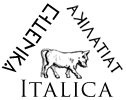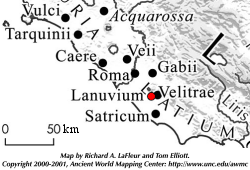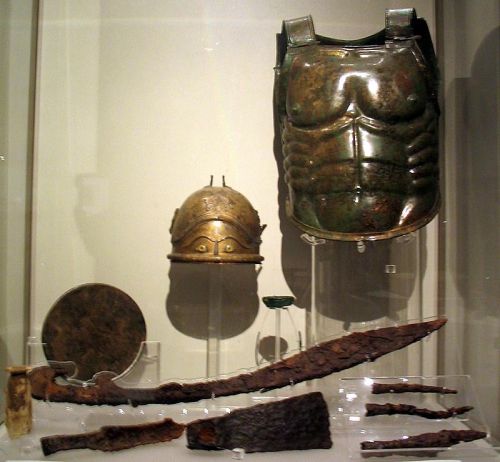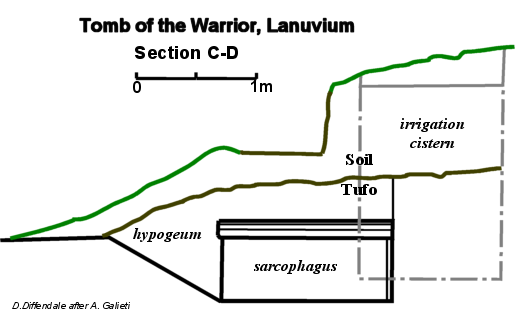
 | Tomba del Guerriero, Lanuvio |
| "Within the general picture of Latium's 6th-5th century tombs, the tomb of the Warrior from Lanuvium (c. 475 BC) remains an exception. It stands out because, though modest and without grave goods, it contained the body of a military commander, buried with his arms and athletic equipment in a rough peperino sarcophagus. This combination of military and athletic ideals points to Greek cultural influence, hardly surprising during the years in which the cult of the Dioscuri, after spreading through Latium, appears even in Rome. Of the arms found in the tomb are exhibited: bronze anatomic breastplate, parade helmet of bronze, silver, gold, and glass paste, axe, a sword, three spear heads. From the athletic equipment: discus, strigil, pouch for sand, alabaster flask." (Exhibition text, Museo Nazionale Romano, Baths of Diocletian) |  |
 |
Selected Bibliography:
|

 
|
Mus. Naz. Rom., Inv. 115196 Iron. Length: 81.7 cm Width at hilt: 7.5 cm Width at blade: 7 cm |
|
  |
Inv. 115197 Bronze. Diameter 23.1 cm thickness 0.65-0.7 cm Weight 2.100 kg |
| Belt | ||
 |
Inv. 115202 Leather and bronze Mouthpiece diameter 7 cm |
(not exhibited) Inv. 115200 Leather and bronze Height 7 cm Length 56 cm (in actual disposition of fragments) |
 | Page created and maintained by Dan Diffendale. Last updated April 27, 2007. |